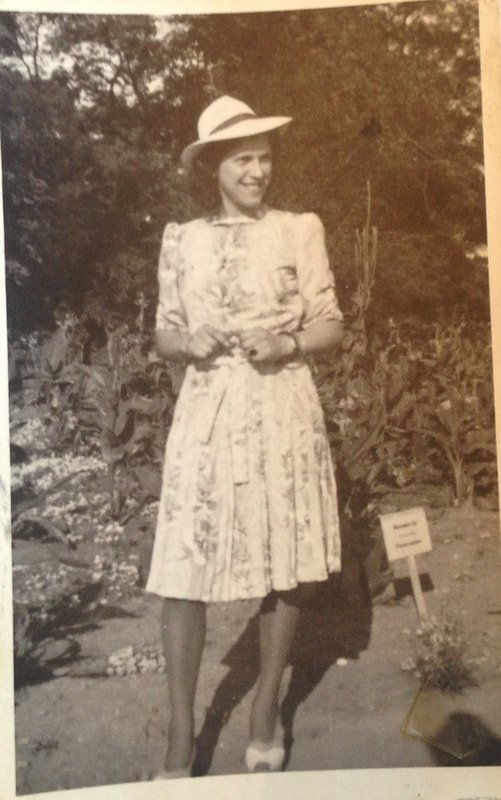Why Queer German Studies Matter Now? Thoughts from a Holocaust Historian
by Anna Hájková (University of Warwick)
The Holocaust rightly belongs among the canonical events of the twentieth century. However, over the past seventy years, our way of narrating this genocide has become monolithic. While it has been possible to incorporate certain new approaches to this historiography — e.g, perspectives on women and gender, studies of Jews as agents rather than passive victims, Jewish history of the Holocaust rather than perpetrator-centered narratives — victim accounts are largely identical. They tell a story of oppression, solidarity, and family bonds. If there are ever stories about conduct among the prisoners that deviate from received and sanctioned narratives about survival, survivor testimonies usually dismiss the people in question or paint them as monsters. We are all familiar with stories about the capo, the sex worker, the Jewish functionary, or the homosexual. It was my fascination with the perspective of what is considered the deviant that set me to ask: where are the stories of the queer Holocaust victims? This approach allows for a very different way of analyzing and understanding the prisoner society of Nazi camps and ghettos.
In this enterprise, I build on the recent scholarship by Christa Schikorra, Robert Sommer, Dagmar Lieske, Julia Hörath, Helga Amesberger, Sylvia Köchl, and Frank Nonnemacher, among others, who study the socially marginalized victims of Nazi Germany: the “asocials” and “habitual criminals.” This courageous research has revealed difficult stories about people who were not allowed to join a survivor association, apply for reparations, or bear a testimony.
That this is a difficult enterprise I learned early on when I studied sex work in Theresienstadt. Several survivors were angry that I asked questions that should not be posed. In response, they attacked me personally, stating that I did this wrong research because of “my problems in love” – meaning that I am a lesbian. This aggression is based in the profound homophobia of a prisoner society that has shaped the postwar narratives. I often hear that history of sexuality of the Holocaust is not a valid line of inquiry but rather a scandalizing interest. What is part of such a statement is in fact the history of queer sexuality in the Holocaust; heterosexual love has been part of the canon all along. Recently, it has even become possible to address sexual violence in the Holocaust. However, queer sexuality (romantic, consensual, or enforced) has, to date, remained a lacuna in Holocaust Studies.
I seek to change that. Drawing on Dagmar Herzog’s and Simon Watney’s statement that sexuality is a much of muchness, a key to understanding the values and logic of a society, I believe we should pay close attention to how sexuality is narrated: What is everyday about sexuality, and what is wrong? How do sexuality and gender roles play out in single sex camps? And, how do these change over time in survivors’ narratives? In the terrifying, violent, and often deadly world of the camps, sexuality was associated with a range of things: comfort, bonding, barter, and pleasure. It also served as proof of social hierarchy and as a tool of dehumanization. Finally, marking someone as sexually “wrong” has been a powerful instrument to destroying their personal integrity.
In observing sexuality and same sex desire in the camps, we understand society in extremis, in terms of gender roles, and on the basis of human solidarity as well as its boundaries. Rather than rejecting the human community in the camps as totalitarian, and thus not a real society, these insights help us understand that social relations continue in the most impossible circumstances, until the end. In the age of populism, austerity, and extreme racism, these are trenchant insights.
References
Helga Amesberger, Brigitte Halbmayr, and Elke Rajal, eds. "Arbeitsscheu und moralisch verkommen": Verfolgung von Frauen als "Assoziale" im Nationalsozialismus. Wien: Mandelbaum Verlag, 2019.
Anna Hájková. “Den Holocaust queer erzählen,” Sexualitäten Jahrbuch(2018): 86–110
---. "Queere Geschichte und der Holocaust," Aus Politik und Zeitgeschichte, 68/32–33 (2018): 42–47. Translated in Notches as “The Queer History and the Holocaust.”
Elizabeth Heineman, ed. The History of Sexual Violence in Conflict Zones: From the Ancient World to the Era of Human Rights. Philadelphia: University of Pennsylvania Press, 2011.
Dagmar Herzog. Sexuality in Europe: A Twentieth-century History. Cambridge: Cambridge University Press, 2011.
Julia Hörath. "Asoziale" und "Berufsverbrecher" in den Konzentrationslagern 1933 bis 1938. Göttingen: Vandenhoeck & Ruprecht, 2017.
Sylvia Köchl. "Das Bedürfnis nach gerechter Sühne": Wege von "Berufsverbrecherinnen" in das Konzentrationslager Ravensbrück. Wien: Mandelbaum Verlag, 2016.
Dagmar Lieske. Unbequeme Opfer?: “Berufsverbrecher” als Häftlinge im KZ Sachsenhausen. Berlin: Metropol Verlag, 2016.
Frank Nonnemacher. Du hattest es besser als ich: zwei Brüder im 20. Jahrhundert. Bad Homburg: Verlag für akademische Schriften, 2014.
Christa Schikorra. Kontinuitäten der Ausgrenzung: "asoziale" Häftlinge im Frauen-Konzentrationslager Ravensbrück. Berlin: Metropole Verlag, 2001.
Robert Sommer. Das KZ-Bordell: Sexuelle Zwangsarbeit in nationalsozialistischen Konzentrationslagern. Paderborn: Schöningh, 2009.

This work is licensed under a Creative Commons Attribution-NonCommercial-ShareAlike 4.0 International License.

